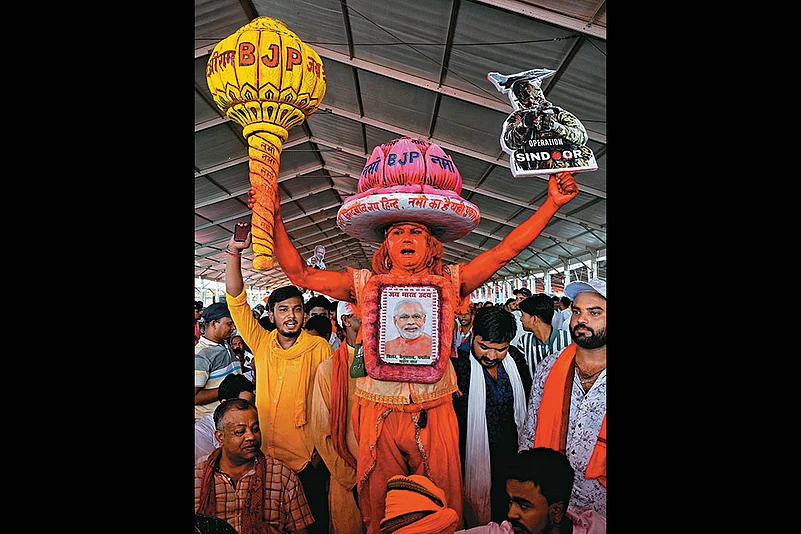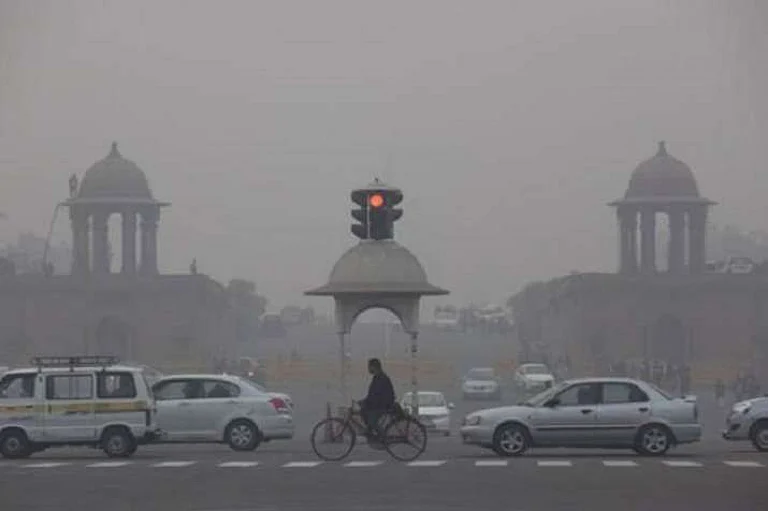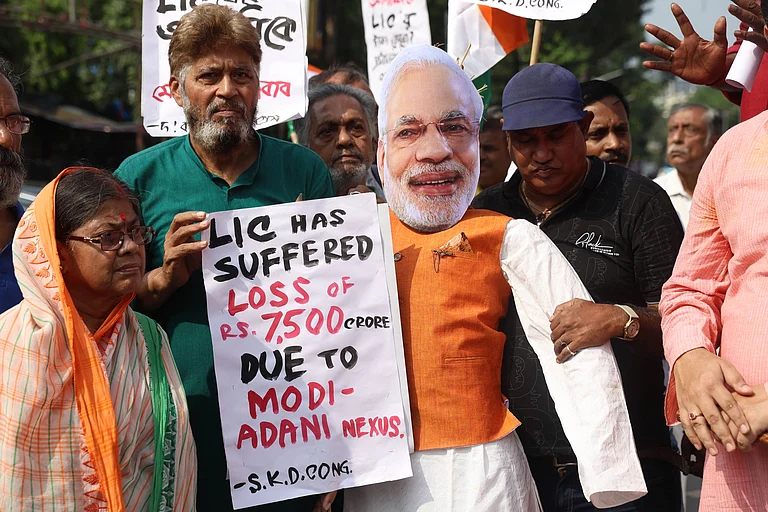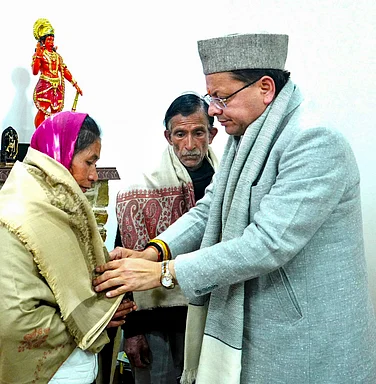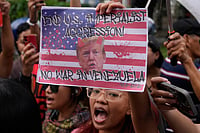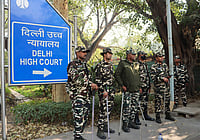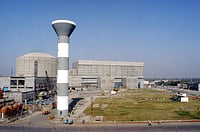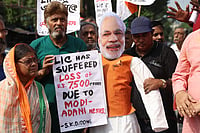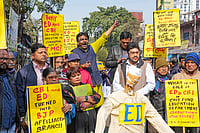It is now widely acknowledged—even by the more circumspect observers of Indian politics—that the eleven years of the Bharatiya Janata Party’s rule (2014-2025) have inflicted deep and enduring damage on the country. While much has been said about institutional erosion and economic decline, the more devastating legacy may lie in the profound social regression this regime has unleashed: the descent of India into a moral and intellectual stupor, marked by communal intoxication, political irrationality, and ethical numbness.
India’s public sphere, once chaotic but plural and energetic, now appears zombified—drained of democratic vitality, critical thought, and civic empathy. This transformation has not happened by accident. It reflects the ideological foundation of the Rashtriya Swayamsevak Sangh (RSS), from which the current government under the leadership of Prime Minister Narendra Modi draws its worldview—a supremacist ecosystem built on myth, historical grievance, and hostility to reason. Modi’s quip that “hard work is better than Harvard” was no throwaway line; it encapsulates the disdain for expert knowledge and institutional balance that has characterised his tenure.
His cabinet was reduced to an echo chamber of yes-men, enabling his unchallenged, often whimsical policymaking.
Reckless Financial Adventures
The BJP government’s economic record, despite glossy optics, reveals a trail of policy disasters and deepening inequality. Demonetisation in 2016, justified as a strike against black money, ended up wiping out small enterprises, destroying over 1.5 million jobs, and reducing Gross Domestic Product (GDP) growth by up to 2 per cent with nearly all currency returning to the system. The informal sector, where 82 per cent of India’s workforce resides, was hit hardest, with income and employment collapsing in its aftermath.
The promise of 20 million jobs annually proved illusory. Unemployment hit a 45-year high, youth joblessness soared past 42 per cent, and labour force participation plummeted from 47 per cent to 40 per cent. Manufacturing shed over 24 million jobs, and of the 22 crore applicants to government jobs, only 7.2 lakh were hired.
Goods and Services Tax (GST), introduced with much fanfare, turned into a compliance nightmare. Its multi-rate slabs and complex returns structure hampered small businesses—with nearly half reporting a decline in profits. States were left to borrow over Rs 1.1 lakh crore to cover shortfalls, damaging federal relations.
In South Asia, India’s influence steadily eroded. The 2015 blockade of Nepal pushed Kathmandu closer to China. Sri Lanka allowed Chinese naval access in 2024.
Meanwhile, inequality soared. Corporate profits flourished; Nifty 50 earnings rose by 84%, while wages grew barely 3 per cent per annum. Farm incomes remained stagnant, growing only 2.9 per cent per year, suicides remained persistently high, and only 6 per cent of farmers benefitted from Minimum Support Price (MSP). The top one per cent of Indians now holds over 40 per cent of national wealth.
The banking sector floundered under mounting bad loans. NPAs peaked at Rs 10.4 lakh crore, and over Rs 10 lakh crore in bad loans were written off—largely benefitting large corporates. PSU bank mergers papered over structural flaws without remedying governance lapses.
Fiscal mismanagement added to the mess. Public debt rose from 67 per cent to 84 per cent of the GDP. The fiscal deficit remains high at 5.8 per cent, above pre-COVID levels. Off-budget borrowings via public sector enterprises further obscured fiscal transparency.
Exports stagnated, the rupee depreciated from Rs 58 to Rs 86 per dollar, and the trade deficit doubled to $240 billion. The much-touted “Make in India” initiative failed to raise manufacturing’s share of the GDP, stuck at around 17 per cent.
Welfare programmes were marred by leakages and underfunding. PM-KISAN registered lakhs of ineligible beneficiaries. MNREGA faced record pending wages of Rs 32,000 crore in 2023. The ’Housing for All” mission lagged with 1.5 crore incomplete units.
COVID-19 exposed the state’s lack of preparedness. The sudden lockdown triggered a 23.9% GDP crash in Q1 2020—the worst among G20 economies. Migrants were left stranded, and the PM-CARES fund operated in secrecy, collecting Rs 10,000 crore with no public audit.
Despite increased UPI adoption, cash in circulation has risen to two-and-a-half times 2016 levels. Inflation remained elevated, averaging 6.2 per cent over the decade, with food inflation peaking at 8.7 per cent in 2023.
The decade saw headline growth, but little opportunity. The BJP government’s economic legacy is one of jobless expansion, shrinking public welfare, and growing inequality.
Foreign Policy: All Optics, Little Substance
This government’s foreign policy was driven by spectacle and persona more than strategic clarity. High-profile summits, handshakes, and stagecraft masked mounting setbacks in India's geopolitical standing.
India’s gravest foreign policy failure lies with China. Despite multiple summits, including Modi's personal diplomacy with Xi Jinping, the 2020 Galwan clash left 20 Indian soldiers dead and China reportedly occupying around 1,000 sq km of Indian territory. Yet the bilateral trade deficit continued to balloon, crossing $100 billion. India remained dependent on Chinese imports, especially in electronics and pharmaceuticals.
With Pakistan, the government vacillated between bluster and disengagement. The 2016 surgical strikes and the 2019 Balakot air raids may have generated domestic applause but yielded no strategic gains for India. Formal diplomatic dialogue has ceased since 2016. Pakistan downgraded ties after the abrogation of Article 370.
In South Asia, India’s influence steadily eroded. The 2015 blockade of Nepal pushed Kathmandu closer to China. Sri Lanka allowed Chinese naval access in 2024. The Maldives demanded Indian troop withdrawal and signed a defense pact with Beijing. The BJP’s "neighbourhood first" policy ended up alienating most of India’s neighbours.
India’s ambivalence during the Russia-Ukraine war frustrated the West. Despite buying Russian oil, the rupee-ruble trade mechanism collapsed, forcing India to pay in Chinese Yuan—an embarrassing strategic compromise.
In West Asia, ties with the Gulf countries faced strain during the Qatar naval officers’ crisis in 2024. The Indian government’s pro-Israel stance during escalating Middle East tensions strained relations with Arab nations. Oil dependence continued unabated.
Multilateral ambitions also fell flat. India’s push for a permanent UN Security Council seat went nowhere. Modi skipped the 2023 SCO summit, even as Xi Jinping and Vladimir Putin attended. The abrupt withdrawal from RCEP and marginalisation in ASEAN deepened perceptions of strategic unreliability.
Crises like the Taliban takeover in Afghanistan and the Sudan evacuation exposed India’s reactive diplomacy. The diplomatic freeze with Canada in 2023 over the Nijjar killing saga revealed further reputational damage. Meanwhile, hate crimes against Indians abroad increased, and H1B visa rejection rates soared.
The result: diminished regional influence, greater economic dependency on rivals, and a hollowed-out soft power image.
Social and Cultural Regression: The Hardest to Reverse
The economic and diplomatic setbacks India has suffered under BJP rule are grave by any standard. Yet, they remain within the realm of repair—provided a competent and committed new government takes charge. What may prove far harder to mend, however, is the profound damage inflicted on India’s social and cultural fabric. This fabric had only just begun to emerge with confidence during the era of colonial modernity, freedom struggle, and constitutional ethos aspiring to take its place within a more cosmopolitan, democratic world culture. Over the past decade, however, that fragile weave has been ruthlessly torn apart.
Until the 1990s, even as caste and religion continued to structure Indian society, the dominant cultural ethos—especially in the public sphere—regarded open assertions of caste pride, communal identity, or overt religiosity as regressive. Until the BJP resurged from its nadir in the 1984 election, when it won just two Lok Sabha seats, taking up the rath yatra for building the Ram Temple, and actually demolished the Babri mosque, there was little social currency in wearing one’s religiosity on one’s sleeve. To say openly that one believed in God, caste, or communal superiority was to risk being seen as backward. Today, the landscape is starkly different: saffron tilaks mark countless foreheads, even of the minions of the secular state; wrists are bound with vermillion threads, and temples are more visible in civic life than schools or libraries.
India’s public sphere, once chaotic but plural and energetic, now appears zombified—drained of democratic vitality, critical thought and civic empathy.
This transformation may not receive the same attention as the more measurable failures of economic policy or foreign relations, but it arguably constitutes the gravest and most enduring legacy of BJP rule. Cultural regression, once normalised, is not easily reversed.
The damage inflicted on the socio-cultural fabric is manifold. Communal polarisation has led to an alarming spike in hate crimes. Over 300 cow-related lynchings were reported between 2014 and 2024, primarily minorities. Hate speech cases rose fivefold. Laws like those against “Love Jihad” were enacted in 12 BJP-ruled states, despite no convictions. The 2021 Haridwar Dharma Sansad openly called for Muslim genocide—without legal consequences.
Academic institutions were stacked with ideologically aligned personnel. Historians like Romila Thapar were erased from curricula. Universities such as JNU and AMU faced surveillance and repression. Student dissent was met with arrests. Free speech was curtailed: sedition charges rose 160 per cent, and India fell to 161st place on the World Press Freedom Index.
School textbooks now reflect a saffronised narrative: erasure of Mughal history, denial of Aryan migration, glorification of Hindu mythology. City names were changed to erase Islamic heritage: Allahabad became Prayagraj; Mughalsarai became Deen Dayal Upadhyay Junction.
Atrocities against Dalits rose by 25 per cent but over 70 per cent of cases remained unprosecuted. Bulldozer politics targetted Muslim homes; hijab bans were enforced in schools in Karnataka and Madhya Pradesh. The Citizenship Amendment Act and National Register of Citizens sparked mass fear among Muslims about citizenship status. The 2020 Delhi riots, killing 53, exposed alleged police complicity.
Despite the “Beti Bachao” slogan, India ranked 131/148 in the WEF Gender Gap Index. Rape cases rose, while conviction rates stagnated. Tribal displacement rose to 4.2 million between 2014-24, and forest land diversion doubled.
A push for “One Nation, One Culture” suppressed linguistic and regional diversity. Hindi imposition drew resistance in Tamil Nadu and the Northeast. Regional art, literature, and cinema were sidelined; artist M.F. Hussain’s legacy was erased, and filmmaker Pa. Ranjith’s Dalit cinema marginalised.
What emerges is a society reengineered to conform to a Hindu majoritarian identity—a nation purged of dissent, discomforted by pluralism, and reshaped in the image of its ruling ideology.
A Republic in Regression
India’s global standing has shrunk, not grown. But it is the social transformation in the last 11 yrs—the silencing of thought, and the elevation of propaganda over reason—that may prove the hardest to reverse despite some good on the economic front that may have happened.
(Views expressed are personal)
MORE FROM THIS ISSUE
Anand Teltumbde is an Indian scholar, writer and human rights activist







